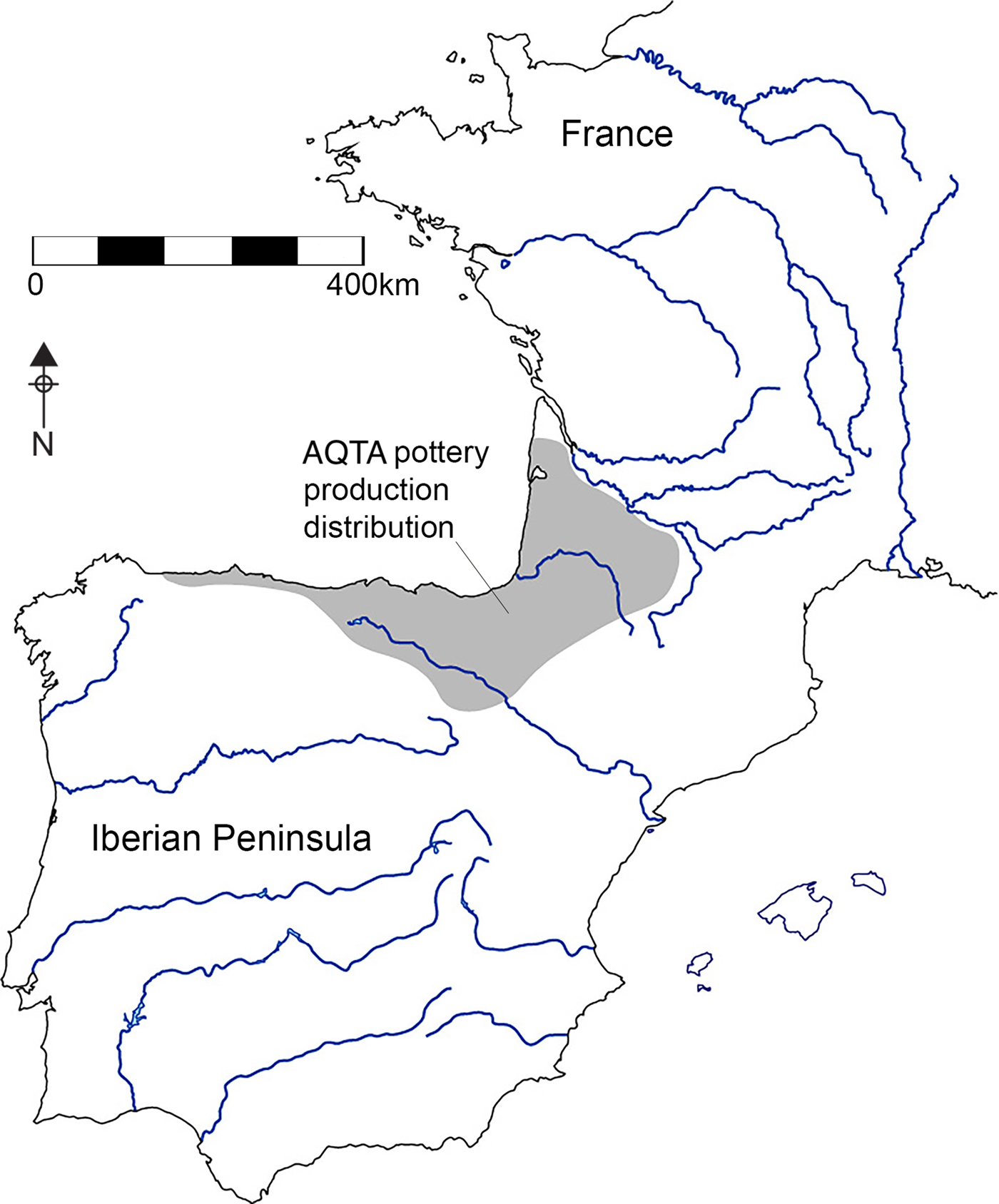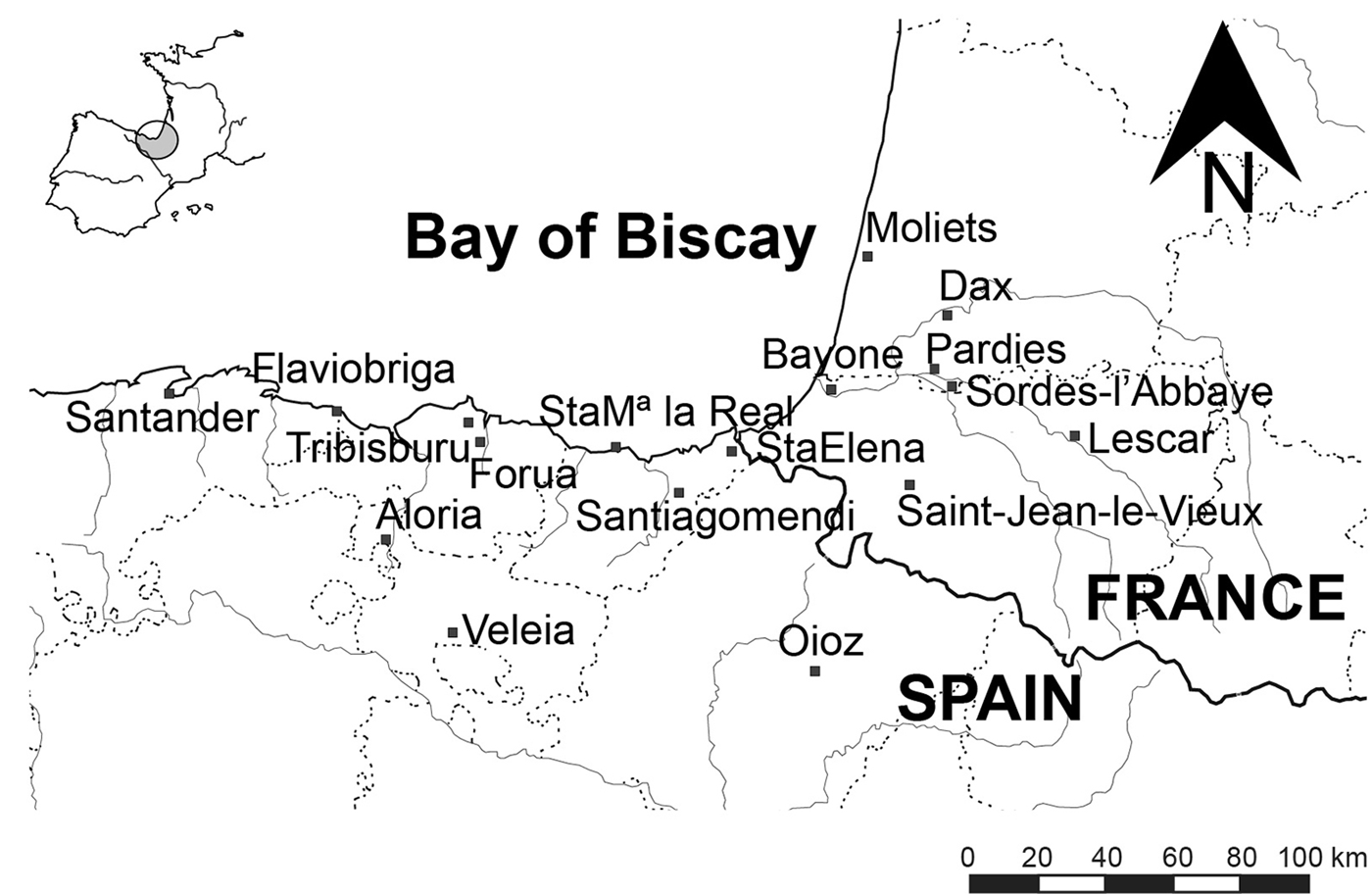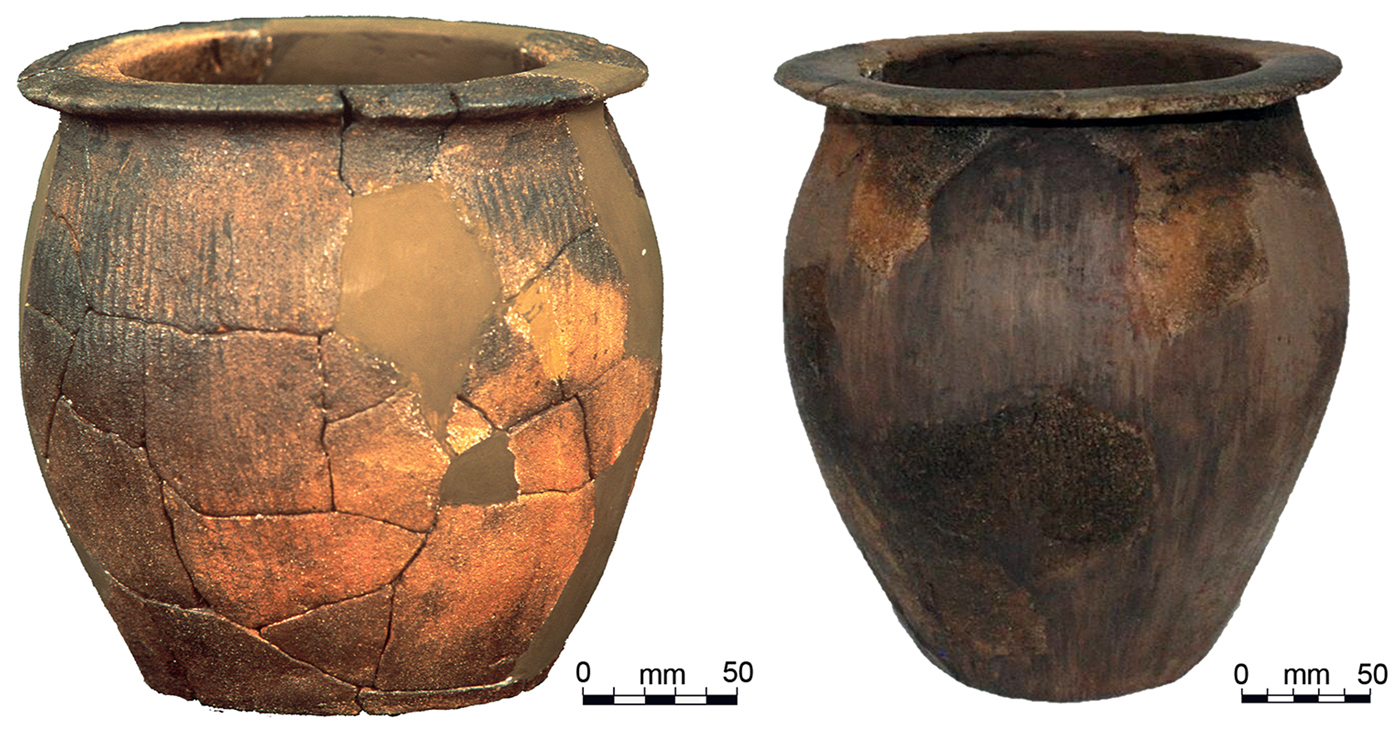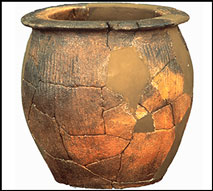This project investigates a specific type of non-wheel-thrown coarse ware pottery dating to the Roman period. This pottery type was manufactured between the second century BC and the fifth century AD, and was consumed in an area that included the neighbouring Roman provinces of south Aquitania (now in south-west France) and Tarraconensis (now in northern Spain), the Cantabrian coastal regions and the northern half of the Ebro River basin (Figure 1). This pottery type is referred to as Aquitania-Tarraconensis (AQTA) production.

Figure 1. Distribution map of AQTA pottery production between southern France (Roman province of Aquitania) and northern Spain (Roman province of Tarraconensis).
The pottery manufacture repertory includes ollae (small, rounded pots), plates, lids, bowls and jars. Until now, no manufacturing workshops have been found. Petrographic, mineralogical and geochemical studies for over 184 AQTA fragments from several archaeological sites in the Basque Country (northern Spain) and southern Aquitaine (Figure 2) suggest that these workshops must have been located in the south of the Aquitaine provenance (Esteban et al. Reference Esteban Delgado, Salcedo, Ortega Cuesta, Alonso-Olazabal, Izquierdo Marculeta, Réchin and Zuluaga Ibargallartu2012). This study combines micro- and macro-scale studies to examine olla-type 701 and olla-type 701a (Figure 3)—specific vessels dating to the Roman period (Martínez Salcedo Reference Martínez Salcedo2004; Esteban et al. Reference Esteban Delgado, Izquierdo, Salcedo and Réchin2008).

Figure 2. Distribution of the archaeological sites from which ceramics were analysed.

Figure 3. Photographs of the studied AQTA ollae: left) pot type 701a; right) pot type 701.
These ollae are found in large numbers in archaeological records between the first and fifth centuries AD, usually representing a significant proportion of the total assemblage. They are generally thought to be containers for the transportation and storage of various foodstuffs or other similar products. They were also used for both cooking food and for funerary purposes at incineration necropolises (Martínez Salcedo Reference Martínez Salcedo1999).
Our objectives are to identify the sources of the raw materials and to characterise the production technology, as well as to test hypotheses relating to the function of these pots. We have focused our attention on a set of pots bearing incised marks made by the potters. Previously published work has revealed that several of these marked pieces correspond to the same petrographic type (Alonso-Olazabal et al. Reference Alonso-Olazabal, Delgado, Izquierdo Marculeta, Salcedo, Ortega Cuesta, Réchin, Zuluaga Ibargallartu, Morais, Fernández and Sousa2014). In this study, we have extended the sampling to other sites in order to consider a greater number of samples and to examine a larger corpus of marks, considering technical characteristics, execution methods and the like. The aim of the petrographic study is to establish the number of production workshops, to recognise different production methods within the same workshop and, finally, to identify whether there were different artisans working within the same workshop. By analysing the potters’ marks we hope to establish a link between a given mark and a particular workshop, or even an individual. To do this, we need to know whether different signals correspond to different manufacturing centres, or if the same workshop used different marks. In addition, organic residue analysis will help us to identify the potential contents of these containers and their functions.
The archaeometric study of the different fabrics allows us to understand the production systems of the different workshops. The interpretive potential is enhanced by the combination of archaeometric analysis on the marked pieces. By mapping the spatial diffusion of this quotidian pottery type and by tracking pieces with specific marks along the Bay of Biscay and the western Pyrenees, we will be able to understand the relationship between pottery production, interregional communications and practices of consumption. A regional network of supply in pots of types 701 and 701a, both by coastal/fluvial systems and by terrestrial systems, could be evidenced by the occurrence of the same mark on the same fabric through the two Roman provinces. Through petrographic examinations of fabrics of AQTA production, it will be possible to substantiate connections between commercial life and social and cultural interactions throughout the Bay of Biscay region.






